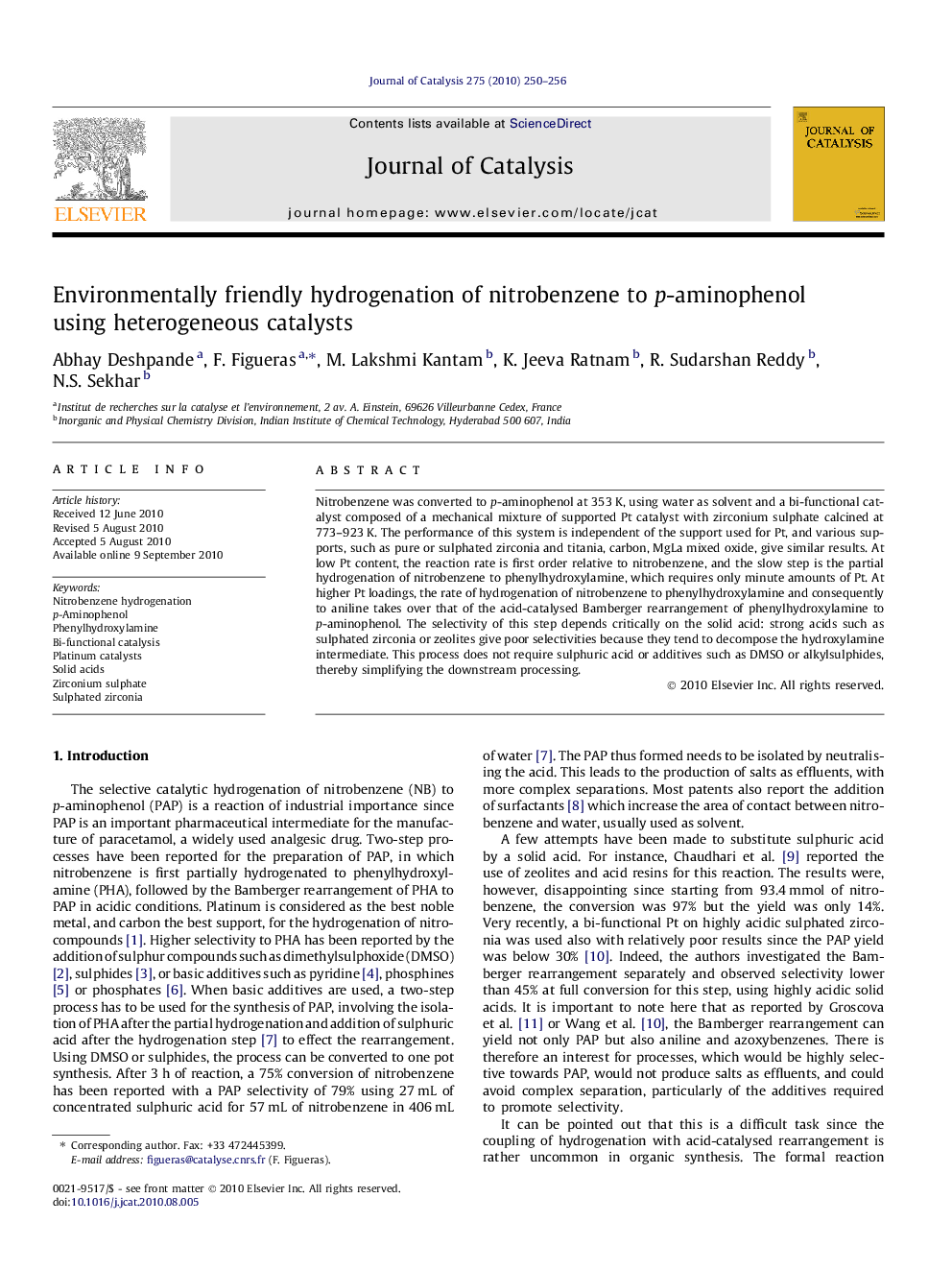| Article ID | Journal | Published Year | Pages | File Type |
|---|---|---|---|---|
| 61805 | Journal of Catalysis | 2010 | 7 Pages |
Nitrobenzene was converted to p-aminophenol at 353 K, using water as solvent and a bi-functional catalyst composed of a mechanical mixture of supported Pt catalyst with zirconium sulphate calcined at 773–923 K. The performance of this system is independent of the support used for Pt, and various supports, such as pure or sulphated zirconia and titania, carbon, MgLa mixed oxide, give similar results. At low Pt content, the reaction rate is first order relative to nitrobenzene, and the slow step is the partial hydrogenation of nitrobenzene to phenylhydroxylamine, which requires only minute amounts of Pt. At higher Pt loadings, the rate of hydrogenation of nitrobenzene to phenylhydroxylamine and consequently to aniline takes over that of the acid-catalysed Bamberger rearrangement of phenylhydroxylamine to p-aminophenol. The selectivity of this step depends critically on the solid acid: strong acids such as sulphated zirconia or zeolites give poor selectivities because they tend to decompose the hydroxylamine intermediate. This process does not require sulphuric acid or additives such as DMSO or alkylsulphides, thereby simplifying the downstream processing.
Graphical abstractBi-functional hydrogenation of nitrobenzene into p-aminophenol using only heterogeneous catalysis, with water as solvent.Figure optionsDownload full-size imageDownload high-quality image (21 K)Download as PowerPoint slide
